- Home
- Jerold Last
The Origin Of Murder (Roger and Suzanne South American Mystery Series Book 8)
The Origin Of Murder (Roger and Suzanne South American Mystery Series Book 8) Read online
THE ORIGIN OF MURDER
BY JEROLD LAST
This novel is a work of fiction. Names, characters, places, and incidents are products of the author’s imagination or are used fictitiously and not to be construed of as real. The Galapagos Islands are a real place and each of the various islands actually looked like Roger and Suzanne describe them when we visited the Galapagos. The M/S Santa Cruz is a real cruise ship and looked exactly like Roger describes it when Elaine and I took the cruise. However, as used and referred to in the novel, all of the characters and events are totally imaginary. Any resemblance to actual events, locales, organizations, or persons, living or dead, is entirely coincidental.
Copyright © 2014 Jerold Last
All rights reserved. No part of this book may be used or reproduced in any manner whatsoever without written permission of the author, except in the case of brief quotations embodied in critical articles and reviews.
Cover photograph of a Galapagos Tortoise by Elaine Last. Copyright © 2014 by Elaine Last
TABLE OF CONTENTS
Foreword
MapoftheGalapagosIslands
Chapter1.Suzanne finds a body
Chapter2.Quito: El Museo Nacional
Chapter3.Quito: The City Tour
Chapter4.Monday Morning-Baltra
Chapter5.Monday Afternoon-North Seymour Island
Chapter6.Meeting Charles Darwin
Chapter7.Back onboard the M/S Santa Cruz
Chapter8.Tuesday-Bartholomew Island
Chapter9.The police arrive
Chapter10.Tuesday afternoon-James Island
Chapter11.Wednesday-Darwin Island
Chapter12. Bruce does some snooping
Chapter13.Wednesday afternoon-Genovesa Island
Chapter14. The plot thickens, but there’s a flicker of light at the end of the tunnel
Chapter15.It’s time for the good guys to go on the offensive
Chapter16.Bruce’s SEAL of approval
Chapter17.Baltra, the planning phase
Chapter18.Diego Garcia-Almost an anticlimax
Chapter19.Friday---Club Med redux
Chapter20.Mexico: Saturday---Hail, Hail, The gang’s all here
Chapter21.Mexico: Sunday---Day 3
Chapter22.A reunion in Mexico
Epilogue
From the author
FOREWORD
As always, thanks to my wife Elaine for editing and her overall critique of several drafts of the book, and for sharing her diaries and memories of our tour through the Galapagos Islands several years ago. This tour belongs on everyone’s bucket list; it’s a very, very special place.
In addition to writing “The Origin of Species” (its actual original title was “On the Origin of Species by Means of Natural Selection, or the Preservation of Favoured Races in the Struggle for Life”), Charles Darwin authored several other books in his lifetime and was a prolific letter writer. The Internet is a fertile source for Darwin quotes, and I used it as a source for the italicized “Darwinisms” that introduce each of the chapters of the novel. My paperback copy of his classic “The Origin of Species” was another fertile source of quotable quotes.
While all of the characters and situations in this book are fictional, the description of the M/S Santa Cruz and of the various islands we visited is as authentic as my memory and Elaine’s diaries could make them. Several of the characters are fictionalized versions of real people we met on the Galapagos Islands tour we took. Similarly, the Paradiso Hotel and beach resort, a former Club Med in Guaymas, Mexico, is a real place Elaine and I visited in its earlier incarnation as the Club Med Guaymas. The various descriptions of buildings, facilities, and locale are as accurate as I could make them.
MapoftheGalapagosIslands
A map of the Galapagos Islands showing Roger and Suzanne’s cruise itinerary, which began at Baltra and North Seymour (Seymour Norte, center, just northeast of Santa Cruz). Other islands visited include Bartholemew Island (Isla Bartolome, northwest of North Seymour, east of Santiago), Genovesa Island (Northeast corner of the Galapagos, site of Darwin Bay), and Santiago Island (James Island, northwest of Baltra). Rita’s body was found floating just off Bartholemew Island.
Map reproduced from Wikipedia under a Creative Commons license.
Chapter1.Suzanne finds a body
Darwin: I shall always feel respect for every one who has written a book, let it be what it may, for I had no idea of the trouble which trying to write common English could cost one—And alas there yet remains the worst part of all correcting the press.
The crewmember tending the outboard engine on the rubberized Zodiac craft picked up a dozen tourists and our guide from the lowest deck, which was just a short step above the ocean level of the cruise ship. The Zodiac ran as a shuttle service between our large cruise ship and whichever island we would be visiting that morning or afternoon. With more than 100 passengers on the cruise ship, the Zodiac driver kept busy ferrying groups of about a dozen each trip to and from the islands.
The outboard motor was large and powerful, the Zodiac itself was pretty light, and the sea was calm, so our trip of about 500 meters to the beach landing should have taken us less than 10 minutes. This particular trip took a lot longer since we had to stop and pick up the dead body that Barbara Kaufman and Suzanne spotted floating face down in the Pacific Ocean less than 100 meters from the beach.
As our rubberized ferry chugged towards our planned wet landing just off of the white coralline beach of Darwin Bay, Barbara Kaufman was enjoying the close-up view of the ocean alongside the starboard side of our boat. The water was quite cold and quite clear, so it was easy to see to the bottom where all sorts of sea life were hanging out. “Slow down!” she hollered in Spanish to our driver in the back of the boat. “There’s something big floating in the water over there, about 50 meters out that way,” she continued, speaking to the boat driver in Spanish, pointing towards a shape in the ocean.
I was surprised at Barbara’s fluent and almost native Spanish. When we first met in Quito, both of the Kaufman sisters had given us the impression that they had minimal survival skills in Spanish, but not much more language proficiency than restaurant menu items and bar drinks. Maybe some of the helpless tourist pose both of the sisters affected was geared to attracting macho males on this trip, rather than indicating the real thing. In any case, it was hard to make fun of the obvious ploy since it certainly seemed to be working with Raul Vonhorst.
“It looks like a human body to me,” added Suzanne, who was sitting right next to Barbara towards the front of the boat. I should mention Suzanne’s peculiar knack for discovering dead bodies, either when she was with me or on her own. This was her first Ecuadorian corpse as far as I knew, to join the ranks of previous Paraguayan, Uruguayan, and Bolivian bodies she had discovered in Montevideo, Uruguay and Los Angeles. It was a very good bet that if the thing in the water looked like a human body to Suzanne, we had a mysterious murder victim floating in the Pacific Ocean near our boat.
The driver slowed the boat and did a wide turn to bring the port side of the Zodiac alongside the shape. He shifted to neutral gear alongside the body and asked Bruce and me to pull the body into the boat as carefully as we could. Bruce, who was sitting alongside me, handed Robert to Suzanne to hold as well as she could given the bulky infant-sized life jacket with M/S Santa Cruz stamped on it Robert was wearing. Bruce took the bottom and I took the top as we heaved the body over the low side of the Zodiac and onto the floor of the craft. In a few seconds the lifeless body lay inel
egantly in a broadening puddle of water in the bow of the Zodiac while most of the passengers scampered towards the stern as if they might get infected with dead-person germs by proximity to the inert corpse.
The deceased was wearing jeans and a dark blue woolen sweater with a crew neck. As we pulled it up into the boat, it became obvious that the body was that of a woman with long dark hair who was probably in her mid- to late-thirties. She had a pretty face and a well cared for body in pretty good shape. Several of the passengers recognized her as having been one of the tourists on our cruise ship.
One of the passengers, a chubby middle-aged man named Howard, spoke up. “Oh my God! Is she dead? This is horrible! That woman ate dinner with us at our table last night. She was by herself. We assumed she was traveling alone. She didn’t say very much. We tried to get her to tell us about herself. I don’t remember her name. Oh my goodness.”
His wife Cora, a skinny counterpoint to the pudgy Howard, confirmed this recollection, turning to the crewmember at the engine to add, “Oh, good Lord! I think she’s dead, señor. Her name is Rita something. She was from New York. This was her first trip to South America. She wanted to see the birds and animals. Rita had a copy of ‘The Origin of Species’ with her at the table. I think she planned to be on the first boat leaving the cruise ship every morning. She couldn’t wait to see all of the different kinds of birds and animals she’d been reading about that inspired Darwin to come up with his theory of evolution. Oh Lordy, this is just terrible!”
The body hadn’t been in the water very long, since there weren’t any signs of damage by hungry sea creatures or by collisions with floating flotsam or jetsam. At this latitude and longitude the ocean was surprisingly cold considering that the Galapagos Islands are almost exactly on the Equator, with water temperatures of 70-77 degrees Fahrenheit depending on the season. Given how cold the water was, it would take a forensic pathologist to estimate how long the body had been in the water, how far the body could have drifted given the prevailing currents, and when Rita had been murdered.
The boat driver asked me to check the body for I.D. Her pockets were empty and she wasn’t carrying a money belt or other kind of pouch in which she could have kept a passport or other I.D. I could, however, guess that the cause of death was acute lead poisoning since two bullet holes were clearly visible in the back of her sweater. The Zodiac swung around to return us with our additional cargo to the mother ship. As we motored back to the larger ship, the driver spoke into his walkie-talkie in a voice too low to be heard by the passengers.
The captain and first mate, plus two other sailors from the crew, were waiting for us when we got back to the M/S Santa Cruz. Rita’s body was transferred to a waiting blanket while the first mate recorded the name of each passenger in the Zodiac. Then we were released and the Zodiac once again motored us to the island, this time landing successfully in the knee-deep water just off the beach. Our guide assembled us into a group, reminded us about essential tourist etiquette in the Galapagos---follow the guide, stay together, stay on the marked paths----and off we went to study nature.
But I’m getting ahead of myself here. We should start this story at the beginning, in Los Angeles, when Suzanne originally had the idea of all of us taking this particular vacation-------
Chapter2.Quito: El Museo Nacional
Darwin: It is not the strongest of the species that survives, nor the most intelligent that survives. It is the one that is the most adaptable to change.
Things had pretty much settled down for the Bowman family since we’d solved the murders at the dog shows and Juliet had her big litter of puppies. We’d kept one of the males, Romeo, and he’d grown enough in the past couple of months to enjoy playing in the backyard with his mother, Juliet. Robert was almost 1 year old, Bruce was still his nanny, and Suzanne and I were back to our normal jobs, she teaching and doing research and me doing what private detectives do on a regular basis. We were both more than ready for a vacation.
"Look what I found," an excited Suzanne volunteered as she waved a copy of Sunset Magazine in front of me. "This is what I want to do for our next vacation, really soon."
Suzanne is a Professor of Biochemistry at UCLA, in Los Angeles. During the quarters she isn't teaching a class she's portable and free to travel, so a vacation on short notice was feasible from her point of view. I'm her husband, Roger Bowman, a private detective. My partner, Vincent Romero, can run our detective agency in my absence, so I'm also portable on short notice. Thanks to Suzanne's inheritance after her father died, we're pretty wealthy. There really wasn't any good reason not to take a vacation whenever the urge hit us to do so, which was very, very infrequently.
I started reading a story in Sunset about a dream vacation in the Galapagos Islands, where tourists could relive a small part of Charles Darwin's famous journey of discovery on H.M.S. Beagle. The article highlighted a non-stop direct flight from Los Angeles to Quito, Ecuador, the jumping-off point to Baltra via Guayaquil to connect with a ship for the Galapagos cruise.
Suzanne looked over my shoulder to make sure I saw all the advantages of her idea. "Look at the larger boats for the cruise--comfort, gourmet food, and lots of luxury between islands. It's expensive, but it'll be our first real vacation without any corpses since I met you. And as long as we don’t go to Montevideo or Lima, there shouldn’t be any new corpses waiting for me to find."
A little voice in back of my head whispered something about not counting one’s eggs prior to them hatching.
United Airlines’ direct flight between Los Angeles and Quito, with local connections to Ecuador’s major port city, Guayaquil and onwards to the Galapagos Islands, plus a convenient travel agency in nearby Westwood, made planning this trip easy. I had a large check I’d just received as a bonus from a client for an investigation that had saved him hundreds of thousands of dollars in potential legal fees, that would more than cover the cost of the entire vacation for all four of us, plus Vincent’s share of our agency’s profits.
So that’s how Suzanne and I, accompanied by our son Robert and his nanny, Bruce, decided to fly to Quito en route to a nice sized ship leaving Baltra, the entry point for the Galapagos Islands, in the Pacific Ocean 600 miles west of Guayaquil, to see tortoises, birds, and the sources of Darwin’s inspiration for writing his classic “The Origin of Species”.
Arrangements in Ecuador were made through the travel agency in Quito highlighted in the Sunset Magazine article via our local travel agent, and checks were written. Less than a month later we were on a flight arriving early in the morning at the International Airport in Quito, the first leg of our adventure. Quito, at an elevation almost two miles high in the Andes Mountains and one of the oldest cities in the Americas, was an important part of the Incan Empire in the 15th and 16th Centuries. The capital city of Ecuador is very different from the other Spanish Colonial cities of similar age to the south in Argentina, Peru and Bolivia. It’s really a very modern city despite the pervasive poverty of most of its inhabitants.
We easily cleared customs and immigration as tourists and connected with a gentleman who was obviously of indigenous ancestry waiting in the airport lobby. He carried a large sign with the local tourist agency’s and our names on it. The driver had a prepaid taxicab waiting to take us to The Hilton Colon Hotel, part of the package tour we had bought, and typical for upscale tourist travel in South America. Suzanne at 5'8'' with her lean and athletic body towered over the taxi driver. Her long blonde hair clearly distinguished her from the local travelers. At 6'2" and 190 pounds I didn't look much like the typical Ecuadorian either. Bruce, who is an inch shorter than Suzanne, and Robert, who had inherited his mother’s blond hair, also looked like gringo tourists. The long ride from the airport to the hotel reminded me a lot of Lima, Peru, except Quito was smaller, poorer looking, and at a much higher elevation, well inland from the Pacific Ocean.
Quito is long and narrow, shaped a lot like a wriggling worm. It’s about 26 miles long and only 5 miles wide.
Most of the main north-south boulevards are at least four lanes wide with center islands, so movement of people by bus, car, and taxi is relatively fast and efficient despite the huge number of buses and taxis clogging the streets. Our hotel was in the northern part of Quito, a long taxi ride from the airport south of the city.
Until UNESCO declared the historic buildings in Quito a national resource a couple of decades ago, the older colonial buildings were routinely torn down to make way for progress. New construction of modern buildings took the place of the older, beautiful, architecturally interesting mansions that used to line the wide boulevards leading to the periphery of the city. As a consequence, most of the construction is post-World War II vintage and utilitarian, if not ugly, blocks of concrete and glass.
The taxi from the airport took quite a while, passing through a large part of the city, to get to our hotel, one of the large ultra-modern style buildings. The Hilton Colon Hotel catered to English speakers, most of who were tourists and business people. The Hilton Colon itself is a 5-star high-rise building with all the amenities of a modern luxury hotel. Despite the time, about 9 A.M., our rooms were waiting for us, and the well-equipped exercise room followed by a long hot shower seemed totally appropriate after our long flight. We both lifted some weights and did time on the Stairmaster and treadmill before sharing that shower. Finally, we joined Robert and Bruce for the breakfast buffet in the lobby, which beckoned to us.

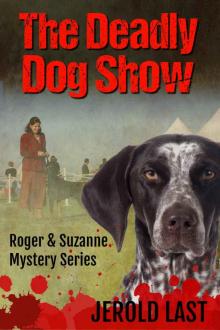 The Deadly Dog Show (Roger and Suzanne South American Mystery Series Book 6)
The Deadly Dog Show (Roger and Suzanne South American Mystery Series Book 6)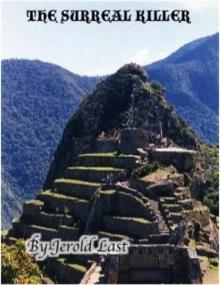 The Surreal Killer (Roger and Suzanne South American Mystery Series Book 2)
The Surreal Killer (Roger and Suzanne South American Mystery Series Book 2) The Body in the Bed (Roger and Suzanne South American Mystery Series Book 5)
The Body in the Bed (Roger and Suzanne South American Mystery Series Book 5)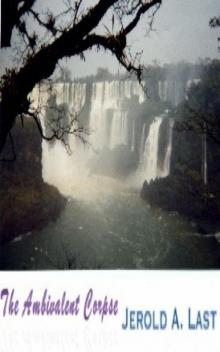 The Ambivalent Corpse (Roger and Suzanne South American Mystery Series Book 1)
The Ambivalent Corpse (Roger and Suzanne South American Mystery Series Book 1) Unbearably Deadly (Roger and Suzanne South American Mystery Series Book 9)
Unbearably Deadly (Roger and Suzanne South American Mystery Series Book 9)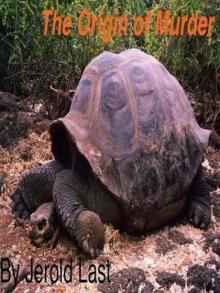 The Origin Of Murder (Roger and Suzanne South American Mystery Series Book 8)
The Origin Of Murder (Roger and Suzanne South American Mystery Series Book 8)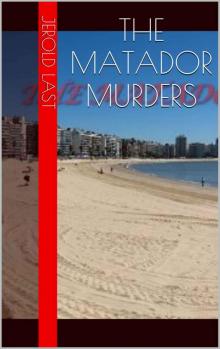 The Matador Murders (Roger and Suzanne South American Mystery Series Book 4)
The Matador Murders (Roger and Suzanne South American Mystery Series Book 4)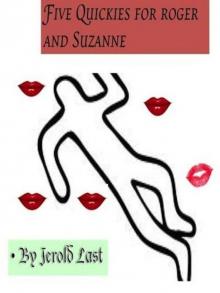 Five Quickies For Roger And Suzanne (Roger and Suzanne South American Mystery Series Book 7)
Five Quickies For Roger And Suzanne (Roger and Suzanne South American Mystery Series Book 7)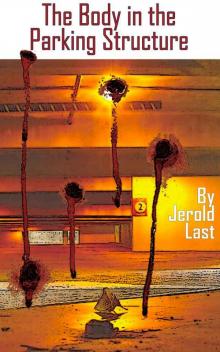 The Body in the Parking Structure (Roger and Suzanne South American Mystery Series Book 4)
The Body in the Parking Structure (Roger and Suzanne South American Mystery Series Book 4)